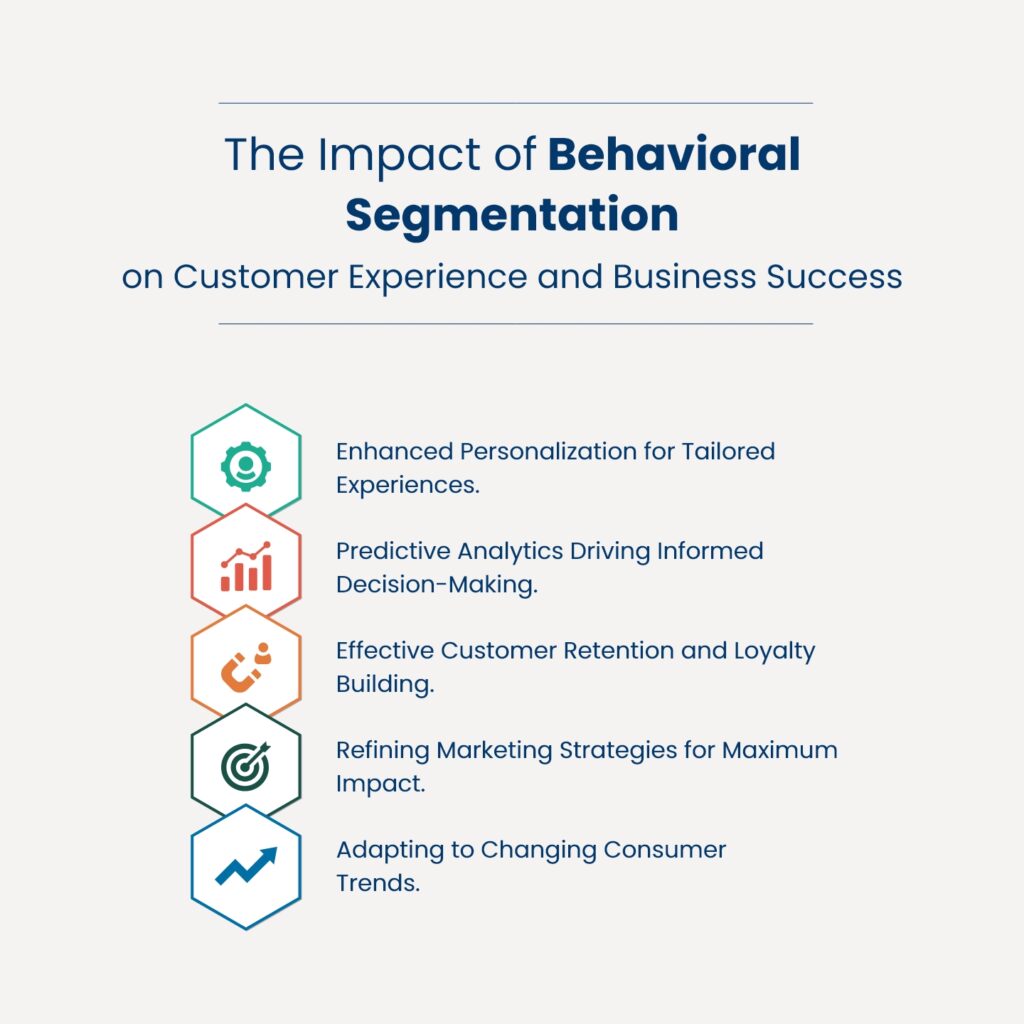Understanding and meeting customer expectations has become paramount today. In this pursuit, businesses are turning to advanced techniques, and one such method that has gained significant traction is behavioral segmentation. Behavioral segmentation is an extremely efficient way to reach your target audience and create marketing messages and marketing materials that will likely compel your target audience to make a purchase. However, research shows that almost 76% of companies are either not aware of it or do not use it, which is unfortunate. So, in this article, we will explore the profound impact of behavioral segmentation on customer experience and how it serves as a catalyst for ensuring long-term business success.
Defining Behavioral Segmentation
Behavioral segmentation involves the categorization of consumers based on their behaviors, preferences, and decision-making patterns. Unlike traditional demographic segmentation, which relies on age, gender, and location, behavioral segmentation focuses on understanding why customers make specific choices. By analyzing customer interactions, purchasing history, and engagement patterns, businesses can gain valuable insights into the psyche of their clientele. AdWeek says personalization in marketing can reduce customer acquisition costs by up to 50%.
Making purchases based on specific occasions can extend into a customer’s daily activities. Examples include buying a round of drinks during happy hour after work or getting a caffeinated morning beverage. Segmenting customers using this method entails observing their purchasing habits to identify a recurring pattern, allowing for proactive targeting.
Suppose your store notices customers who consistently engage in your Thanksgiving promotions annually but make no other purchases throughout the year. In that case, this information can be leveraged to tailor marketing efforts to these customers weeks in advance of the Thanksgiving season.

Enhanced Personalization for Tailored Experiences
One of the key advantages of behavioral segmentation is its ability to enable personalized customer experiences. By dissecting the behavioral patterns of their audience, businesses can tailor their products, services, and marketing strategies to meet individual needs. Incorporating recommendation systems into the business model enhances the customer experience by offering tailored suggestions. For instance, Amazon uses past behavior and the purchase history of segments with similar behaviors to recommend other products. These product recommendations—a direct result of behavioral segmentation—are responsible for a whopping 35% of sales. Let’s comprehend this better with another example.
As part of the multinational corporation Johnson & Johnson, BabyCentre UK operates as a pregnancy and childcare resource within the United Kingdom. Utilizing a Facebook Messenger app, the company offers personalized advice and targeted recommendations by gathering user input through a series of questions and answers. In examining the factors driving the highest website traffic, BabyCentre found that its messenger bot achieved an impressive read rate of 84% and a click-through rate (CTR) of 53%. These statistics culminated in an overall engagement rate that surpassed its email funnel by an impressive 1,428%, underscoring the effectiveness of accurate categorization through segmentation.
Predictive Analytics Driving Informed Decision-Making
Behavioral segmentation, when coupled with advanced analytics, empowers businesses to make data-driven decisions. Predictive modeling, a cornerstone of behavioral segmentation, employs statistical algorithms and machine learning to forecast future customer behavior based on historical data. This technology enables businesses to anticipate customer needs and preferences, empowering them to proactively address concerns and provide personalized solutions. Through the lens of behavioral segmentation, businesses can identify trends, anticipate shifts in consumer preferences, and position themselves ahead of the competition.
Customer Retention and Loyalty Building
Understanding the nuances of customer behavior is instrumental in cultivating long-term relationships. Behavioral segmentation allows businesses to identify and address pain points in the customer journey, ensuring a seamless experience. For instance, a subscription-based service might use behavioral segmentation to offer personalized incentives, reducing the likelihood of customer churn. Likewise, repeat customers spend 67% more than first-time buyers. And 84% of consumers say they’re more inclined to stick with a brand that offers a loyalty program.
Against this backdrop, quite similar to recommendation systems, recommender systems play a pivotal role in behavioral segmentation. By understanding the unique preferences of customers, these systems create a curated environment where individuals feel understood and valued. This not only leads to increased customer satisfaction but also boosts customer loyalty.
Refining Marketing Strategies for Maximum Impact
In the digital age, marketing strategies need to be dynamic and adaptive. Behavioral segmentation equips businesses with the tools to refine their marketing efforts for maximum impact. By tailoring campaigns to specific customer segments, companies can deliver targeted messages that resonate with their audience. Whether through personalized email campaigns or targeted social media advertisements, behavioral segmentation ensures that marketing efforts are relevant and compelling.
But, remember behavioral segmentation is incomplete without the integration of robust customer insights. Through the analysis of customer data, businesses gain a deeper understanding of the factors driving customer behavior. This knowledge forms the foundation for creating targeted marketing strategies, enhancing product offerings, and refining overall business operations.
Adapting to Changing Consumer Trends
Consumer behavior is dynamic, and influenced by societal shifts, technological advancements, and cultural changes. Businesses that embrace behavioral segmentation are better positioned to adapt to these evolving trends. By continuously analyzing customer behavior, companies can identify emerging patterns and adjust their strategies accordingly. This agility is crucial in staying ahead in competitive markets, as businesses can pivot quickly to meet changing demands and preferences.
Takeaway
The impact of behavioral segmentation on customer experience and business success is undeniable. This advanced approach to customer analysis goes beyond surface-level demographics, delving into the intricacies of consumer behavior. Through enhanced personalization, refined marketing efforts, and adaptability to changing trends, businesses can leverage behavioral segmentation to forge stronger connections with their audience. As we navigate the ever-changing landscape of commerce, embracing the power of behavioral segmentation is not just a strategy—it’s a necessity for those aiming to thrive in the modern business ecosystem.


